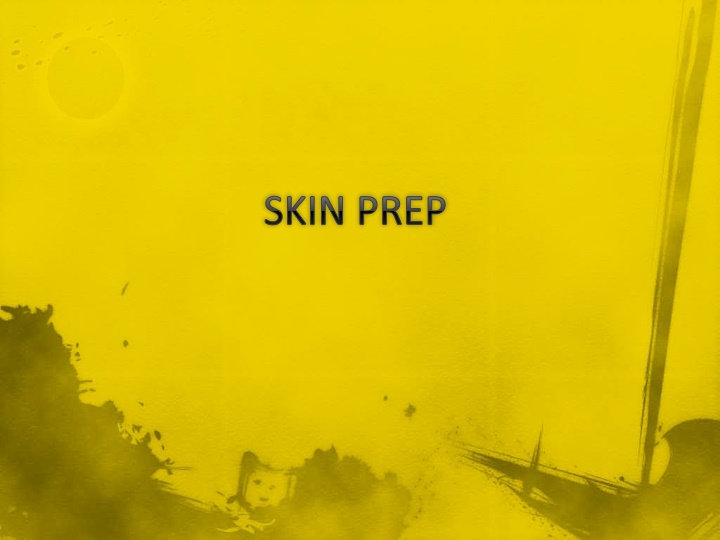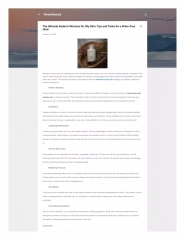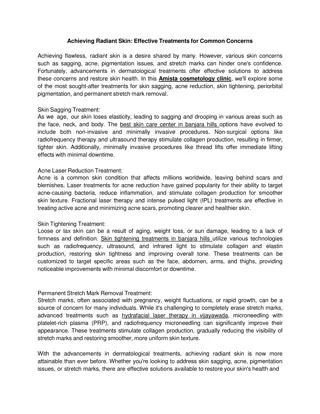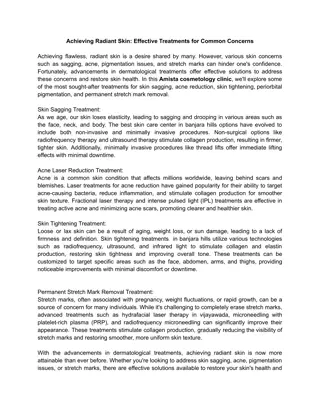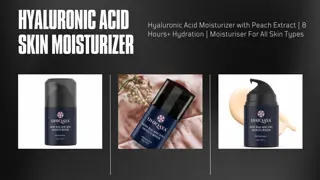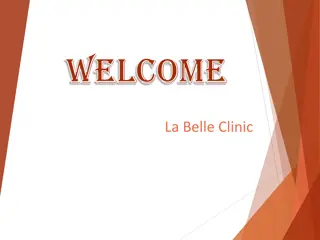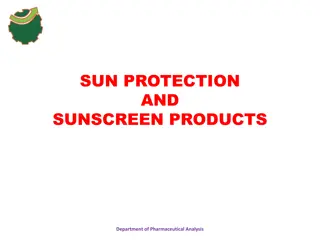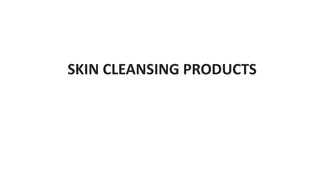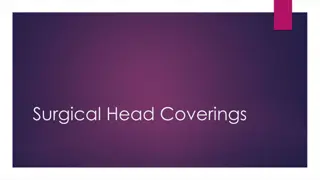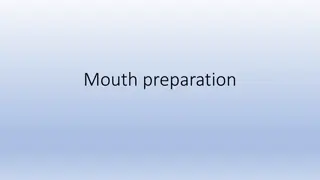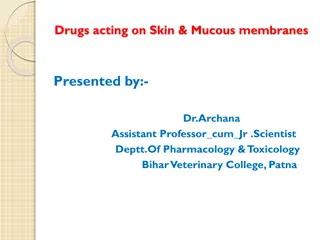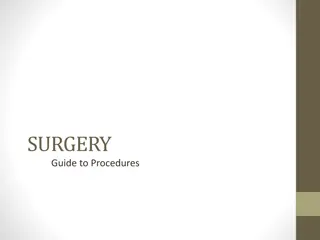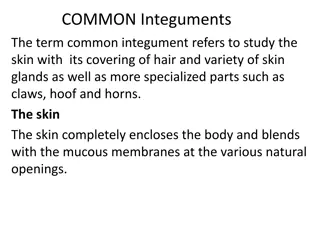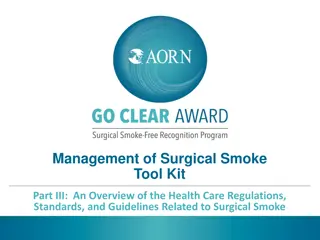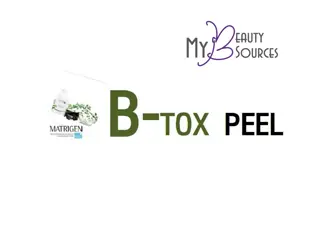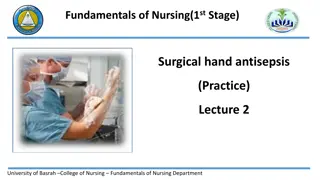Surgical Skin Preparation: Importance and Best Practices
Surgical skin preparation is crucial to reduce microbes and prevent surgical site infections. It involves thorough cleansing to eliminate dirt, oils, and microbes while minimizing the risk of infection. Methods include mechanical friction and using antiseptic solutions like alcohol, iodine, and chlorhexidine. Considerations for prep sets, types of antiseptics, and specific actions are essential to ensure effective skin preparation before invasive procedures and wound care. Proper skin prep can significantly reduce the risk of surgical site infections and promote better outcomes post-operation.
Download Presentation

Please find below an Image/Link to download the presentation.
The content on the website is provided AS IS for your information and personal use only. It may not be sold, licensed, or shared on other websites without obtaining consent from the author.If you encounter any issues during the download, it is possible that the publisher has removed the file from their server.
You are allowed to download the files provided on this website for personal or commercial use, subject to the condition that they are used lawfully. All files are the property of their respective owners.
The content on the website is provided AS IS for your information and personal use only. It may not be sold, licensed, or shared on other websites without obtaining consent from the author.
E N D
Presentation Transcript
Purpose Reduce the number of transient microbes to the least possible number on the intended operative site (same reason we perform surgical hand scrub) Rids site of dirt Rids site of oils Minimizes microbes to least possible number irreducible minimum
When to Prep? Invasive surgical procedures Traumatic wound care
Goal Prevent SSI SSI -an infection of the tissue in or around a surgical wound. To be considered a surgical site infection, the infection must occur within 30 days after surgery.
Action Mechanical friction - the rubbing of one object or surface against another Chemical antiseptic solution - an antiseptic is a substance which inhibits the growth and development of microorganisms. Anti = prefix meaning against septic = containing or resulting from disease-causing organisms
Types of Antiseptics Alcohol -rapid reduction of microbial count May use after iodine to provide better adhesion of bio-drape (Ioban) If on field at start color or clearly label to avoid confusion with other clear medications that may be on the field Avoid splashing as this is a re-capped solution FLAMMABLE! Avoid pooling. Iodine - rapid reduction of microbial count Remove after 2-3 minutes to avoid skin irritation (dry/blot with sterile towel) Iodophors - less irritating to skin/no need to remove Chlorohexidine (Hibiclens)- less rapid reduction of microbial count Residual effect 4-6 hours Hexachlorophene (G-11)-can use several days prior to surgery as builds up a lasting or cumulative effect
Prep Sets Assemble you own: Antiseptic, sponge sticks, sponges, sterile gloves, sterile towels Prep packs: may or may not contain antiseptics Single-use applicators: Gel-Preps Circulator or ST circulator assistant performs betadine scrub prep and may do betadine paint Surgeon or ST may perform betadine paint after circulator does scrub Surgeon may just use paint and no scrub
Considerations Should be broad spectrum antiseptic Should provide residual or lasting effect Patient specific (sensitivities/allergies) Procedure specific Surgeon preference Prevent pooling Avoid splashing Avoid eyes, ears, nose
Contaminated Areas Normally harbor body fluids or microorganisms Broken skin Avoid mucous membranes: Sinuses Mouth Nose Vagina Anus Stomas (openings: colostomy, etc.)
Contaminated Area: Rules of Thumb Prep surrounding area first and contaminated area last Use new sponge each time have passed over contaminated area
Where the Prep Falls in the Sequence of Pre- operative Preparation Anesthesia administered Urinary catheter placed Patient positioned All pre-operative procedures must occur before the prep to prevent contamination of the incision site Skin prep Draping of the patient Intra-operative phase begins with incision or beginning of surgery
Prior to Procedure Clean surgical site prior to prep prn of dirt, grease, etc. May need to shave area: electric razor preferable as is less likely to create skin irritation which can open an area exposing to potential infection Shave should occur as close to time of surgery as possible (surgeon preference if removed) Remove all hair (use tape prn) May need to change a draw sheet Do not want hair floating around and getting in surgical site
Procedure 1. 2. Basic handwash Gather supplies: Prep kit Sterile gloves (open glove technique for circulator if doing pre-scrub) Clock with second hand Clean working surface Lighting Trash Positioning aides prn Final surgical position achieved prior to prep 3. 4. 5. 6. 7. 8.
Procedure Area to be prepped exposed Drip towels or prep pad is placed Prepare sterile field Don sterile gloves using open glove technique if you are not a sterile team member Prep according to situation and area AVOID grounding pad May need to have CRNA move EKG electrodes if they are in the area needing to be prepped Excess prep solution can cause chemical burns to patient s skin and potentially cause a fire if near area of cautery (spark) or laser (beam)
Situations and Areas of Prep Rules of thumb: Prep surgical area beginning with incision site and moving outward in circular motion, include a large area surrounding the surgical incision site Do not go back! If axilla, thighs, or pubic areas are involved prep them last If area is a contaminated area, prep surrounding area first, and contaminated area last
NOTE Some services: orthopedic, neurosurgical, vascular, thoracic, may require timed scrubs of 5 minutes ASK if not on preference card
Prep Area: Abdomen Incision site to nipples and pubis, pubis last May include upper thighs, still prep groin and pubis last
Prep Area: Chest & Breast Incision site, around to bedline, includes shoulder and axilla May include arm (rare)
Prep Area: Extremities Considerations: Assistant with sterile gloves will grasp extremity after a prepped area has been washed and hold up for prepping Begin at surgical incision site and move around circumference of extremity, prepping groin or axilla last Feet or hands will be prepped separate or last if groin or axilla not involved
Prep Area: Extremitites Leg & Hip Foot & Ankle: foot and entire leg ankle to knee Hip: hip, abdomen on affected side, entire leg and foot, buttocks to table line, groin, and pubis Bilateral leg: both legs to toes or ankles to waist line or umbilicus, prepping groin and pubis last
Prep Area: Extremities Hand & Arm Hand: hand & arm to 3 inches above the elbow Shoulder: shoulder, base of neck, chest to midline, upper arm circumferentially, axilla last Arm: entire arm circumferentially, shoulder, hand (prn), axilla last
Prep Area: Perineal Place drip pad under buttocks Begin at pubic area, move down over the genitalia, perineum, and anus Discard sponge after going over the anus If doing an abdominoperineal procedure should use two separate prep sets (changing gloves in between) or prep abdomen first, then perineal area as described Should not double dip!
Prep Area: Vaginal Some surgeons may not prep the vagina Will need sponge stick or forceps for internal vaginal prep Need pad under buttocks to catch prep fluids Begin at pubis, moving over vulva, perineum, and anus (discard after going over anus) Sponge stick with prep solution inserted into vagina to move in circular motion to cleans vaginal vault Dry sponge stick should be used afterwards in vaginal vault to internally dry
Prep Area: Eyes, Ears, Nose, Face Eyes are protected Area surrounding incision site is prepped as much as possible to hairline Some surgeons will not prep for eye, ear, and nose surgeries
Prep Area: Head Usually only the immediate area surrounding the incision site is shaven and prepped Used to shave entire head and prep entire head May still do this occasionally Will begin at incision site and move around in a circular motion away from site, avoiding dripping into the ears, eyes, nostrils, and mouth
Prep Area: Back Begin at incision site and move away in a circular outward motion Depending on site of incision, may prep to buttocks and or the neck to the hairline
Procedure Completed Remove drip towels without touching prepped area (circulator will remove these) Clean up supplies Remove contaminated gloves Wash your hands Note or report any skin abnormalities to the RN or MD immediately, ideally before beginning of the prep.
Summary Skin Prep Procedure Surgical Site Variations Considerations
